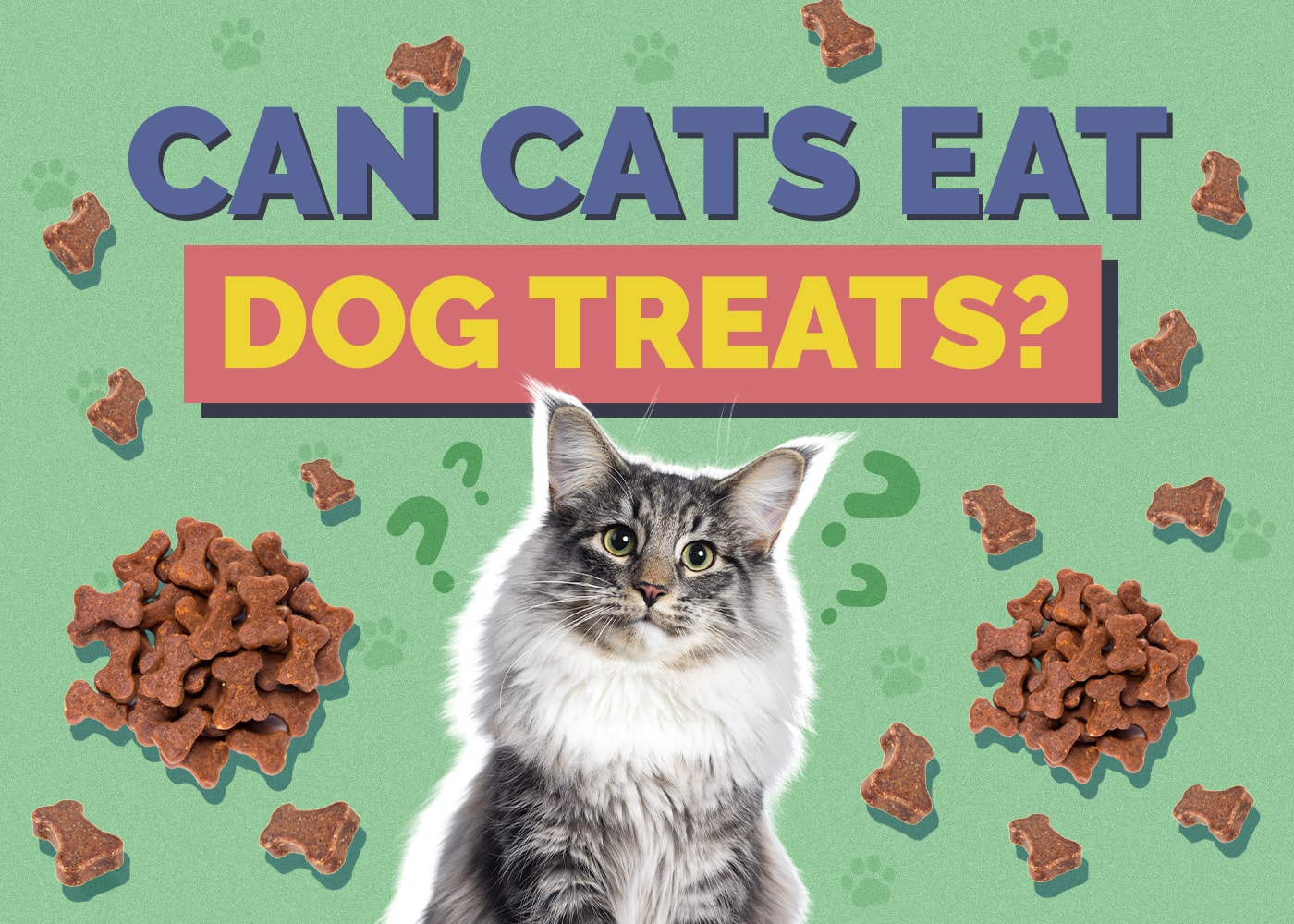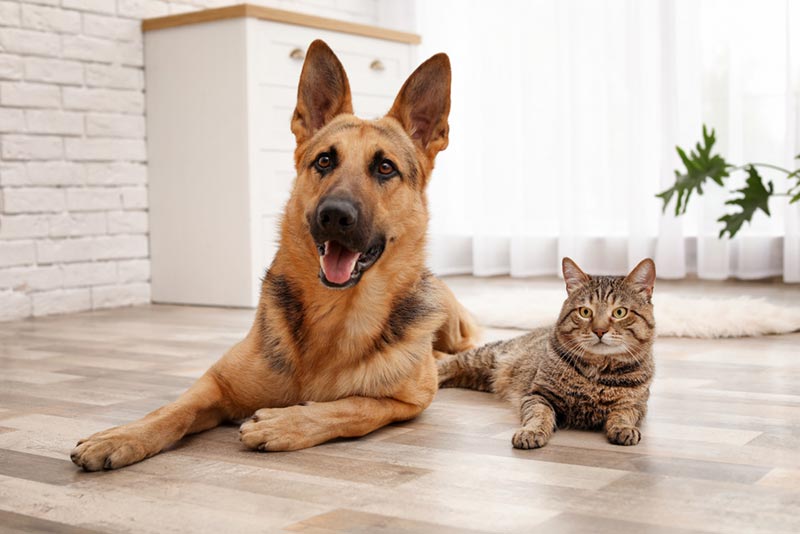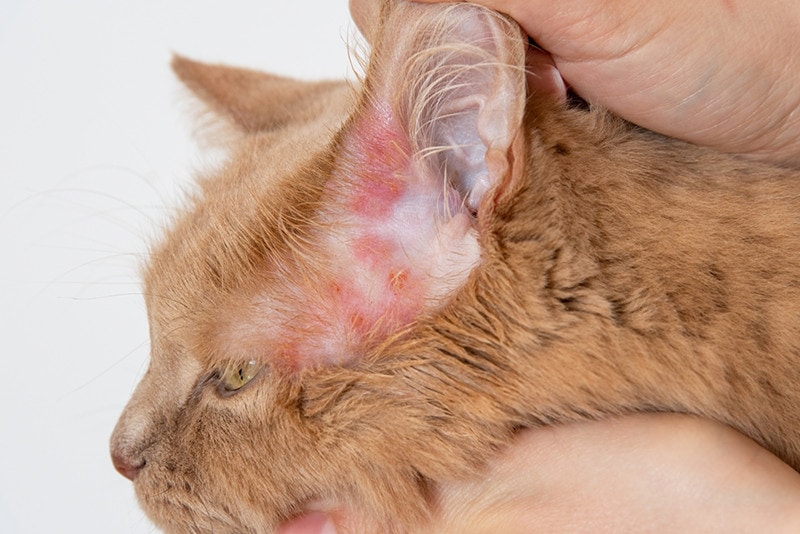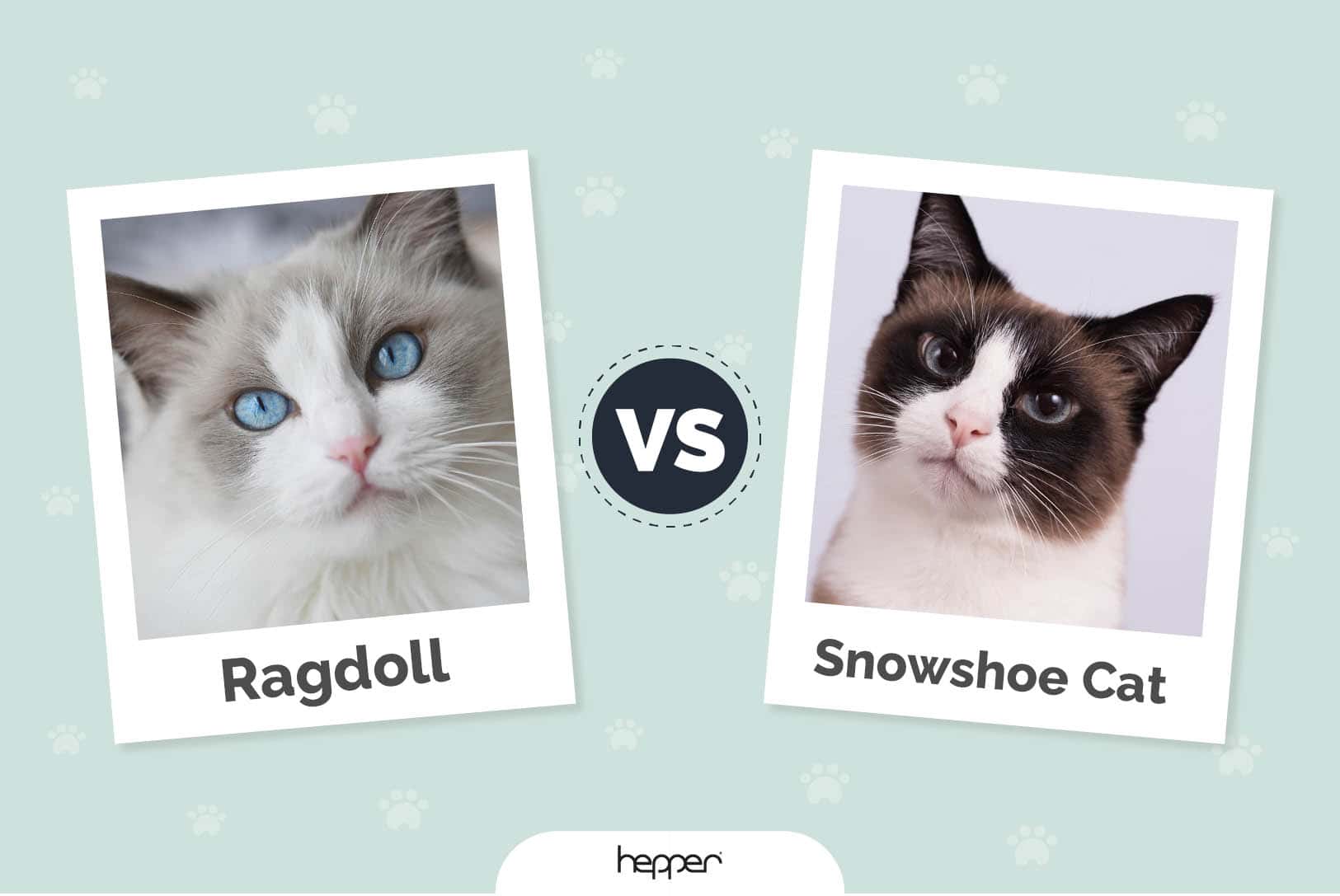Can Cats Eat Dog Treats? Nutritional Facts & Safety Guide

Updated on

The ingredients in cat and dog foods are mostly similar. They have high protein, ideally from animal sources, and a range of vitamins and minerals to support health. However, both species have different requirements for nutrients for them to have a complete and balanced diet. This means that you can’t feed a diet made for dogs to cats long term without negative effects.
Does the same apply to treats? Can cats eat dog treats? Yes, cats can safely eat most dog treats, but it should only be on occasion. Some dog treats have ingredients that you should avoid feeding to your cat.
Cat and Dog Nutritional Needs
Both dogs and cats belong to the Mammalia class and the order Carnivora, but cats are in the family Felidae and dogs are in the family Canidae. Other carnivores and omnivores in this order include raccoons, weasels, otters, seals, sea lions, and skunks.
Cats are obligate carnivores, meaning they need animal sources for protein and fat as there are essential nutrients they cannot produce for themselves. Dogs are facultative carnivores, which means their optimal diet is meat-based, but they can digest plant matter. This is reflected in their food formulas: cat food is required by the Association of American Feed Control Officials (AAFCO) to supply the minimum requirements for amino acids.
No cat or dog food is entirely meat-based, however. Even high-quality foods and treats for both species have ingredients like fruits, vegetables, and grains. Low-quality foods have even less meat content and use fillers to fill out the calories.

Can Cats Have Dog Treats?
It’s fine for cats to have most of the other ingredients in dog treats, if they’re used as a treat and not part of the regular diet. Most of the ingredients in dog treats are found in cat treats or commercial food for both species.
Keep in mind that some dog treats contain ingredients that aren’t beneficial for cats, such as peanut butter and grains. This isn’t a concern if you’re only feeding small amounts of dog treats to your cat occasionally, provided its other nutritional needs are met by its regular diet.
If you’re not sure if the treat is safe for your cat, avoid feeding it or wait and ask your vet. Some dog treats have warning labels if they contain ingredients that are hazardous to cats, but not always.

What Dog Treats Can I Feed My Cat?
You can find just as many dog treats as cat treats, so you’re spoiled for choice. If you want to include occasional dog treats in your cat’s routine, be sure to choose small dog treats that won’t present a choking hazard. You should also opt for high-quality treats with animal protein and wholesome ingredients.
A word of caution: some moist dog treats contain propylene glycol, a toxic ingredient. This substance absorbs water and is used in the food industry as an additive to soak up excess water and as a solvent for food colors and flavors. In high concentrations, propylene glycol may be used as antifreeze.
There are different grades for propylene glycol, so the ingredient found in treats isn’t the same as vehicle antifreeze, or ethylene glycol, the highly toxic antifreeze that’s a known fatal poison for dogs and cats.
Still, propylene glycol can cause toxicity in high concentrations, and cats are particularly sensitive to this substance. In fact, it’s no longer permitted in commercial cat foods or treats. Because of this, it’s important to check ingredients and avoid feeding dog treats with propylene glycol to your cat.
If you’re concerned about your dog’s health with propylene glycol, switch to dog treats that don’t have this ingredient or make sure to offer these treats in small portions to avoid toxicity.
In both dogs and cats, propylene glycol can cause involuntary muscle movements, depression, weakness, and increased thirst and urination. Severe symptoms include Heinz body anemia, low blood pressure, circulatory failure and seizures. There is no known threshold in cats before toxicity occurs making it difficult to determine how much can be ingested safely, but cats ingesting a diet of 6%-12% propylene glycol can result in anemia.
Now that you know what you can safely feed your cat, it’s just as important to find a bowl that supports their health and well-being. With whisker-friendly bowls and a wide tray to catch any spills, our Hepper NomNom Cat Bowl is our favorite option.
 Conclusion
Conclusion
Commercial foods and treats for dogs and cats have a lot of similar ingredients, so it’s safe to indulge your cat by offering a dog treat occasionally. However, dog treats shouldn’t be fed excessively or used as part of your cat’s daily diet since cats have different nutritional needs than dogs. Be sure to check the ingredient list for dog treats to avoid toxic ingredients and choose high-quality treats in small bites that are safe for your cat to enjoy.
Featured Image Credit: Maya Shustov, Shutterstock











